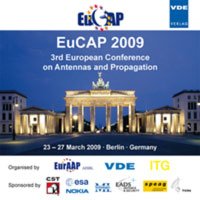Testing the Markov Property of Rain Fading on Millimeter Band Terrestrial Radio Link
Conference: EuCAP 2009 - 3rd European Conference on Antennas and Propagation
03/23/2009 - 03/27/2009 at Berlin, Germany
Proceedings: EuCAP 2009
Pages: 5Language: englishTyp: PDF
Personal VDE Members are entitled to a 10% discount on this title
Authors:
Csurgai-Horváth, László; Bitó, János (Budapest University of Technology and Economics, Department of Broadband Infocommunications and Electromagnetic Theory, Budapest, Hungary)
Abstract:
This paper investigates the Markov property of the rain fading process, measured on millimeter band terrestrial radio link and determines the appropriate order of discrete state and discrete time Markov chain, which is applicable to model the original fading process. The investigated channel is a radio connection in a GSM feeder network operating at 38 GHz frequency. The channel is affected by the precipitation, mainly the rain which can cause significant attenuation during the high intensity periods [1]. To analyze the rain fading process, the measured analog received power has been quantized to integral values in order to achieve less and manageable states but keeping the original tendencies of the attenuation process. Afterwards a Chi-square test will be applied to determine the process order. In [2] several Markov chain based models are proposed to simulate different first and second order channel characteristics. To reproduce the fading process the most appropriate discrete time and discrete state homogenous Markov chain is to be selected, where the model’s order influences the capability reproducing the memory in the investigated process.


